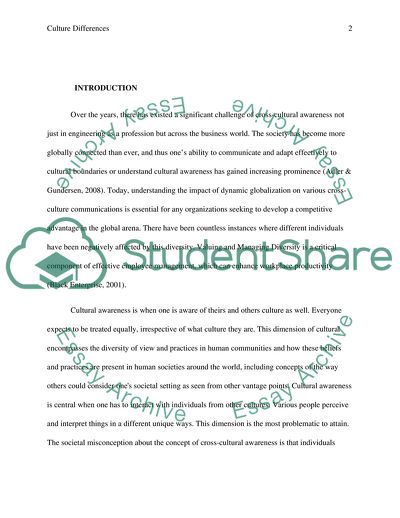Cite this document
(Culture Awareness and Mutual Differences Essay Example | Topics and Well Written Essays - 2116 words, n.d.)
Culture Awareness and Mutual Differences Essay Example | Topics and Well Written Essays - 2116 words. Retrieved from https://studentshare.org/culture/1867092-culture-differences
Culture Awareness and Mutual Differences Essay Example | Topics and Well Written Essays - 2116 words. Retrieved from https://studentshare.org/culture/1867092-culture-differences
(Culture Awareness and Mutual Differences Essay Example | Topics and Well Written Essays - 2116 Words)
Culture Awareness and Mutual Differences Essay Example | Topics and Well Written Essays - 2116 Words. https://studentshare.org/culture/1867092-culture-differences.
Culture Awareness and Mutual Differences Essay Example | Topics and Well Written Essays - 2116 Words. https://studentshare.org/culture/1867092-culture-differences.
“Culture Awareness and Mutual Differences Essay Example | Topics and Well Written Essays - 2116 Words”, n.d. https://studentshare.org/culture/1867092-culture-differences.


